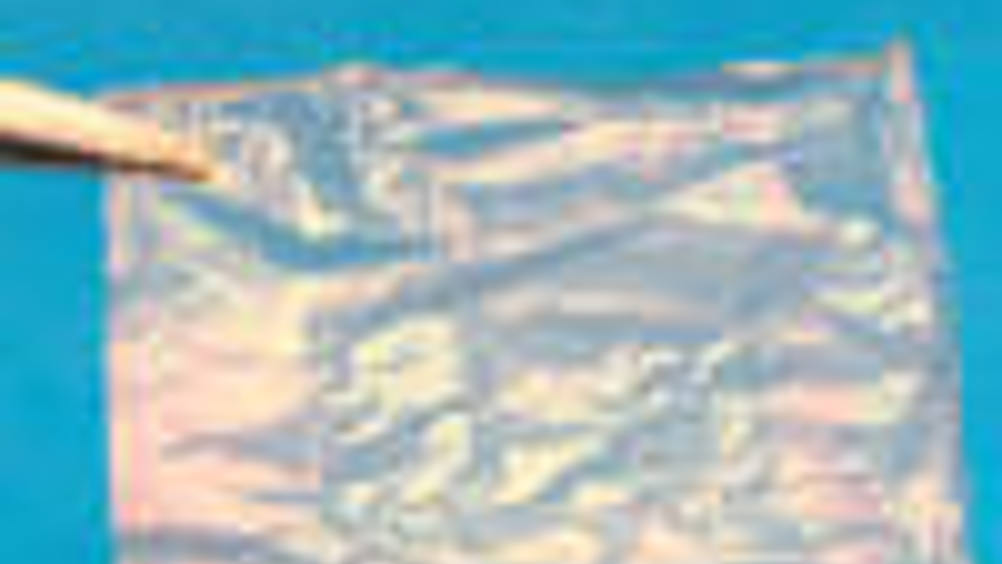Plastic as strong as steel
University of Michigan researchers have created a composite plastic that's claimed to be as strong as steel but lighter and transparent.

By mimicking a brick-and-mortar molecular structure found in seashells, University of Michigan researchers have created a composite plastic that's claimed to be as strong as steel but lighter and transparent.
It's made of layers of clay nanosheets and a water-soluble polymer that shares chemistry with white glue.
Engineering Prof Nicholas Kotov almost dubbed it "plastic steel," but the new material isn't quite stretchy enough to earn that name. Nevertheless, he said, its further development could lead to lighter, stronger armour for soldiers or police and their vehicles.
Kotov and other University of Michigan scientists solved a problem that has confounded engineers and scientists for decades: Individual nano-size building blocks such as nanotubes, nanosheets and nanorods are ultrastrong. But larger materials made out of bonded nano-size building blocks were comparatively weak until now.
'When you tried to build something you can hold in your arms, scientists had difficulties transferring the strength of individual nanosheets or nanotubes to the entire material,' Kotov said. 'We've demonstrated that one can achieve almost ideal transfer of stress between nanosheets and a polymer matrix.'
The researchers created this new composite plastic with a machine they developed that builds materials one nanoscale layer after another.
The robotic machine consists of an arm that hovers over a wheel of vials of different liquids. In this case, the arm held a piece of glass about the size of a stick of chewing gum on which it built the new material. The arm dipped the glass into the glue-like polymer solution and then into a liquid that was a dispersion of clay nanosheets. After those layers dried, the process was repeated. It took 300 layers of the glue-like polymer and the clay nanosheets to create a piece of this material as thick as a piece of cling film.
Mother of pearl, the iridescent lining of mussel and oyster shells, is built layer-by-layer like this. It's one of the toughest natural mineral-based materials.
The glue-like polymer used in this experiment, which is polyvinyl alcohol, was as important as the layer-by-layer assembly process. The structure of the "nanoglue" and the clay nanosheets allowed the layers to form cooperative hydrogen bonds, which gives rise to what Kotov called "the Velcro effect." Such bonds, if broken, can reform easily in a new place.
The Velcro effect is one reason the material is so strong. Another is the arrangement of the nanosheets. They're stacked like bricks, in an alternating pattern.
'When you have a brick-and-mortar structure, any cracks are blunted by each interface,' Kotov explained. 'It's hard to replicate with nanoscale building blocks on a large scale, but that's what we've achieved.'
Register now to continue reading
Thanks for visiting The Engineer. You’ve now reached your monthly limit of news stories. Register for free to unlock unlimited access to all of our news coverage, as well as premium content including opinion, in-depth features and special reports.
Benefits of registering
-
In-depth insights and coverage of key emerging trends
-
Unrestricted access to special reports throughout the year
-
Daily technology news delivered straight to your inbox










BEAS funding available to help businesses cut energy costs
And not a moment too soon, if the following exchange broadcast last Friday 13th June, on the Radio 4 ´Rare Earth´ program (link below, ~ 17 minutes...